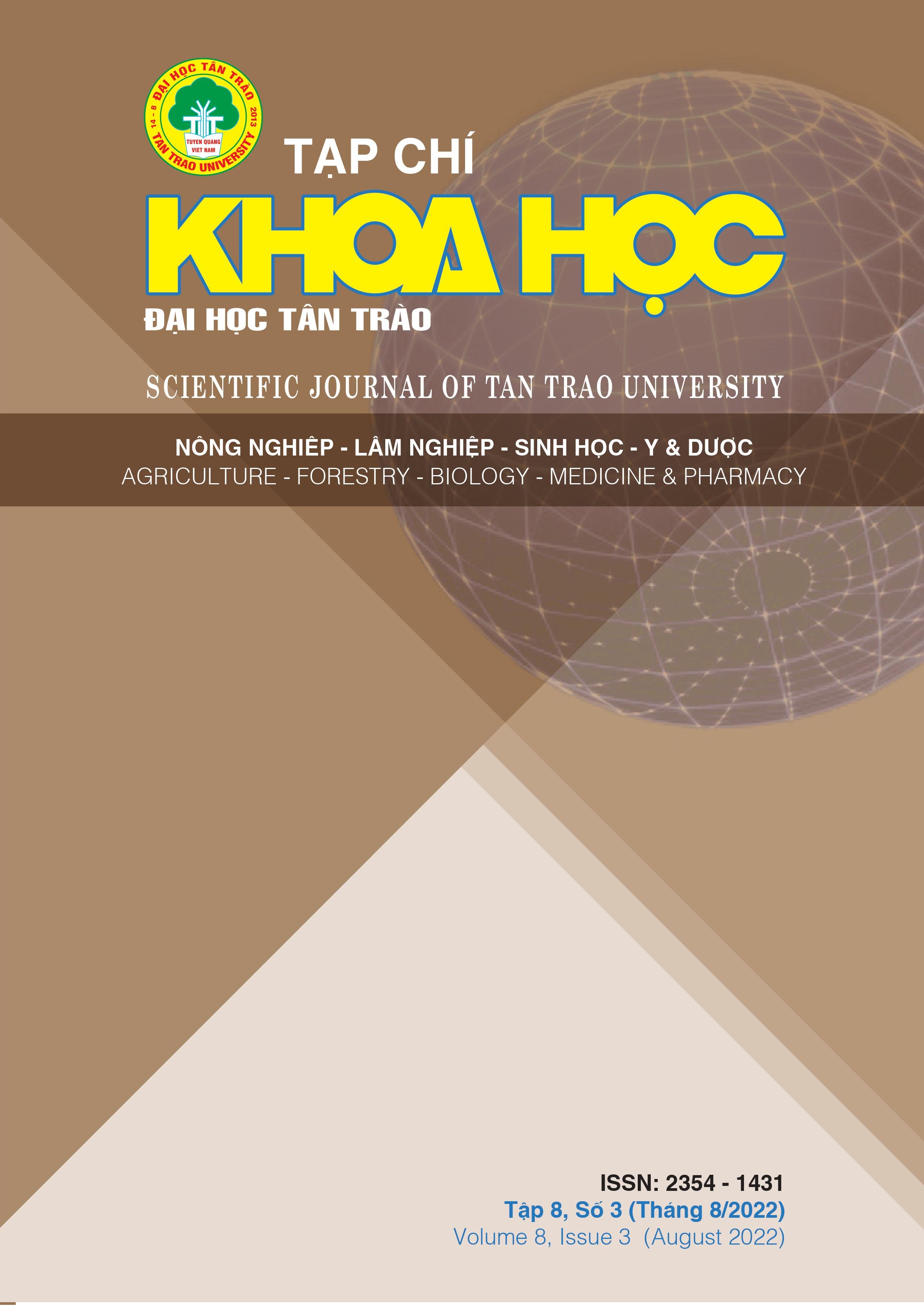APPLICATION OF DRIP IRRIGATION TECHNOLOGY IN MANUFACTURING IN SUGARCANE AREAS OF SON DUONG SUGAR JOINT STOCK COMPANY
DOI:
https://doi.org/10.51453/2354-1431/2022/792Keywords:
Water saving, sugarcane, drip irrigation, irrigation technologyAbstract
Drip irrigation technology with the goal of overcoming the limitations of traditional irrigation such as proactively supplying water to plants according to each growth period at a high level of accuracy, occupying less arable land. With drip irrigation technology, water is supplied directly to the soil containing the plant's roots, reducing losses due to infiltration and evaporation, saving 20-30% compared to traditional irrigation technology. According to the research results on sugarcane in Tuyen Quang, it shows that for each hectare of sugarcane planted with drip irrigation technology, the production cost increases from 10.5 - 12 million VND/ha/year, but the yield increases by at least 40%. Therefore, the profit of drip-irrigated sugarcane area is from 24.5-26.3 million VND/ha, higher than traditional irrigation from 8.3 - 10 million VND/ha. The efficiency of 1 VND of investment capital of the irrigation model is 1.53 - 1.58 times while the traditional irrigation is only 1.47 times.
Downloads
References
[1]. Department of Crop Production (July 2016), Summary report of sugarcane production year 2015-2016
[2]. QCVN 01-131:2013/BNNPTNT National technical regulation on testing the cultivation and use value of sugarcane varieties.
[3]. Department of Agriculture and Rural Development Tuyen Quang. Guideline No. 660/HD-SNN dated 14/4/2015 Technical guidance on planting, caring and harvesting sugarcane.
[4]. Direcorate of Water Resources, Manual for water-saving irrigation technology for upland crops (Volume 1- 2013)
[5]. Institute For Water And Enviroment (IWE) (2014), Research on technological processes and irrigation equipment suitable for sugarcane in concentrated raw material areas
[6]. Sugarcane Research Institute, Collection of Scientific Research Results 2007-2012
Downloads
Published
How to Cite
Issue
Section
License

This work is licensed under a Creative Commons Attribution-ShareAlike 4.0 International License.
All articles published in SJTTU are licensed under a Creative Commons Attribution-ShareAlike 4.0 International (CC BY-SA) license. This means anyone is free to copy, transform, or redistribute articles for any lawful purpose in any medium, provided they give appropriate attribution to the original author(s) and SJTTU, link to the license, indicate if changes were made, and redistribute any derivative work under the same license.
Copyright on articles is retained by the respective author(s), without restrictions. A non-exclusive license is granted to SJTTU to publish the article and identify itself as its original publisher, along with the commercial right to include the article in a hardcopy issue for sale to libraries and individuals.
Although the conditions of the CC BY-SA license don't apply to authors (as the copyright holder of your article, you have no restrictions on your rights), by submitting to SJTTU, authors recognize the rights of readers, and must grant any third party the right to use their article to the extent provided by the license.


